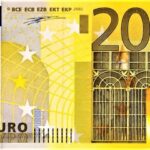Australian Dollar Holds Ground Despite Mixed PMI Signals
The Australian Dollar (AUD) traded slightly higher against the US Dollar (USD) early Thursday before giving up part of its gains, with the AUDUSD pair stabilizing around 0.6640. Despite this trimming, the pair remained relatively firm after the release of Australia’s preliminary S&P Global Purchasing Managers Index (PMI) data for May.
Australia’s Manufacturing PMI held steady at 51.7, signaling continued modest expansion in factory activity. However, the Services PMI slipped to 50.5 from 51.0 in April, barely remaining above the contraction threshold. As a result, the Composite PMI eased to 50.6 from a previous 51.0 reading. The data reflected the diverging strength between sectors in the Australian economy, with manufacturing displaying resilience while the services sector showed signs of cooling.
While these indicators failed to surprise markets significantly, they added nuance to the Reserve Bank of Australia’s (RBA) recent decision to cut the Official Cash Rate (OCR) by 25 basis points. The move brought the rate down to 3.85%, marking the first reduction since the RBA’s tightening cycle began in 2022.
RBA’s Bullock Seeks Confidence Boost Through Proactive Rate Cut
RBA Governor Michele Bullock offered a clear rationale for the policy easing, emphasizing that the decision was a “proactive, confidence-boosting move.” She stated that curbing inflation remains a top priority, but added that the board is ready to act again if economic conditions worsen.
Bullock’s remarks helped maintain some optimism around the AUD, particularly among investors who viewed the RBA’s preemptive stance as an effort to stabilize domestic demand and ensure the economy doesn’t slide into contraction. Yet, the market remains cautious over whether the RBA may cut rates again in the second half of 2025, especially if domestic consumption continues to soften.
US Dollar Recovers Slightly Ahead of PMI Data
Across the Pacific, the US Dollar has struggled for direction following a series of weaker-than-expected economic indicators. However, ahead of the S&P Global US PMI data release later on Thursday, the US Dollar Index (DXY) stabilized slightly around 99.50, trimming four straight days of losses.
Traders are closely monitoring the US business activity gauges, particularly as the Fed has begun signaling potential dovish shifts. Market consensus anticipates that both the Manufacturing and Services PMI prints will show moderate expansion, but any downside surprise could further weigh on the Dollar.
Fed Officials Voice Concern Over Trade Policy Uncertainty
Several Federal Reserve officials added pressure to the Greenback this week through their increasingly cautious commentary. Cleveland Fed President Beth Hammack and San Francisco Fed President Mary Daly both warned of rising economic risks, highlighting falling consumer and corporate confidence. They specifically blamed trade policy uncertainty for eroding sentiment.
Atlanta Fed President Raphael Bostic echoed similar concerns, warning that erratic tariff strategies introduced under President Donald Trump are undermining logistics and investment planning. These assessments raise questions about how long the Fed can maintain its current policy stance if confidence—and eventually spending—continues to deteriorate.
Moody’s Downgrade Hits US Dollar Sentiment
Another weight on the US Dollar has been Moody’s downgrade of the US credit rating from Aaa to Aa1. The move aligns with previous downgrades by Fitch and S&P and underscores long-term fiscal concerns.
Moody’s cited projections that US federal debt will reach 134% of GDP by 2035, a significant jump from 98% in 2023. It also warned that the budget deficit could balloon to nearly 9% of GDP, primarily due to rising interest expenses, ballooning entitlement costs, and declining tax revenues.
This downgrade, although long anticipated, has reinforced market expectations that the Fed will likely shift toward an easing bias over the next few quarters, particularly if growth slows further and inflation remains subdued.
Easing Inflation and Weak Retail Sales Strengthen Rate Cut Bets
Last week’s economic data provided further justification for dovish Fed bets. Both the Consumer Price Index (CPI) and Producer Price Index (PPI) showed signs of softening price pressures in April, suggesting inflation may be retreating more sustainably.
Retail sales also came in below expectations, furthering the view that American consumers—once the backbone of the post-COVID recovery—are beginning to tighten their belts. These developments have led many investors to price in at least two rate cuts by the Fed in 2025.
Such expectations have put downward pressure on Treasury yields and the US Dollar, indirectly benefiting higher-yielding currencies like the Australian Dollar.
US-China Trade Tensions Simmer Again
The geopolitical landscape added another twist this week, with China’s Commerce Ministry accusing the US of “unilateral bullying” over restrictions placed on advanced chip exports. These accusations come amid a renewed flare-up in trade tensions between the two largest economies.
China is reportedly reevaluating its diplomatic approach to US negotiations, suggesting that any goodwill built during recent truce talks could unravel if more restrictions are announced. Meanwhile, Chinese authorities are also studying the legal and retaliatory options available under WTO rules.
Despite this friction, markets remained somewhat optimistic after signs emerged of a 90-day truce extension. However, sentiment remains fragile, particularly as President Trump has threatened to impose tariffs on any country that refuses to negotiate in “good faith.”
PBoC Cuts Loan Prime Rates to Stimulate Growth
In a complementary move to boost economic activity, the People’s Bank of China (PBoC) trimmed its Loan Prime Rates (LPRs) this week. The one-year LPR was lowered from 3.10% to 3.00%, while the five-year LPR was cut from 3.60% to 3.50%.
This action underscores Beijing’s growing concern about economic momentum, particularly in the property and manufacturing sectors. The rate cut may indirectly support the Australian economy, which is heavily reliant on Chinese demand for commodities such as iron ore and coal.
A recovery in Chinese industrial output could translate into stronger export revenues for Australia, potentially supporting the Aussie Dollar in the medium term.
Australian Politics Add to Australian Dollar Another Layer of Uncertainty
Back home, the AUD is also reacting to domestic political developments. The recent disbandment of the opposition coalition after the National Party severed ties with the Liberal Party has shifted the political landscape.
The ruling Labor Party has seized the opportunity, advancing a broader and more interventionist economic agenda. While some investors view this as a positive development that could lead to increased fiscal support, others worry about longer-term fiscal sustainability and the potential for overreach.
Political instability typically dampens investor confidence, though so far the reaction in the forex market has been muted.
Outlook: PMI and Fed Policy to Guide Short-Term Direction
Looking ahead, the AustralianDollar pair’s direction in the near term will likely hinge on upcoming US PMI data and continued signals from Federal Reserve officials. A downside surprise in business activity could reignite expectations for earlier rate cuts, putting more pressure on the USD.
On the Australian side, the impact of the recent RBA rate cut may take weeks to materialize in consumption and investment data. However, the Aussie Dollar could find additional support if Chinese demand picks up following the PBoC’s easing measures.
With risk sentiment on edge due to trade tensions and US political uncertainty, the Australian Dollar remains vulnerable to sharp swings. But for now, the Aussie appears resilient, supported by a cautiously proactive RBA and external demand from Asia.







